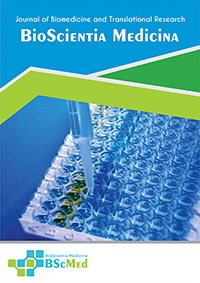Main Article Content
Abstract
Background: Genitourinary syndrome of menopause (GSM) is a prevalent and chronic condition that diminishes quality of life. Vaginal laser therapy is a non-hormonal treatment, but its efficacy and safety require rigorous synthesis. This study was conducted to systematically evaluate the efficacy of laser therapy for GSM by prioritizing high-quality evidence and separately analyzing findings from different study designs, while also providing the first meta-analytic overview of safety.
Methods: A systematic search of PubMed, Scopus, Embase, and the Cochrane Library was performed for studies published between January 2015 and December 2024. The primary analysis of efficacy was restricted to randomized controlled trials (RCTs). A separate, secondary analysis was performed on prospective cohort studies. Primary outcomes were changes in vaginal epithelial thickness and the Visual Analog Scale (VAS) for dryness. Secondary outcomes included VAS for dyspareunia, vaginal health index (VHI), female sexual function index (FSFI), and systematically extracted adverse events. Data were pooled using a random-effects model.
Results: Seven studies (2 RCTs, 5 cohort studies) involving 595 patients were included. In the primary analysis of RCTs, laser therapy resulted in a significant increase in epithelial thickness (Mean Difference [MD] 50.15 µm) and a significant reduction in VAS for dryness (MD -4.54) with low-to-moderate heterogeneity. The secondary analysis of cohort studies also showed significant improvements, but with extremely high and significant heterogeneity (I² > 80%). Across all studies, reported adverse events were consistently mild and transient, including temporary erythema, edema, and minor discharge. No serious adverse events were reported.
Conclusion: Based on high-quality evidence from RCTs, vaginal laser therapy produces statistically significant improvements in the histological and clinical parameters of GSM. Evidence from cohort studies supports this finding but demonstrates considerable variability in real-world settings. While short-term safety appears favorable, the inconsistent treatment effect and lack of long-term data necessitate a cautious approach to patient selection and counseling.
Keywords
Article Details
As our aim is to disseminate original research article, hence the publishing right is a necessary one. The publishing right is needed in order to reach the agreement between the author and publisher. As the journal is fully open access, the authors will sign an exclusive license agreement.
The authors have the right to:
- Share their article in the same ways permitted to third parties under the relevant user license.
- Retain copyright, patent, trademark and other intellectual property rights including research data.
- Proper attribution and credit for the published work.
For the open access article, the publisher is granted to the following right.
- The non-exclusive right to publish the article and grant right to others.
- For the published article, the publisher applied for the Creative Commons Attribution-NonCommercial-ShareAlike 4.0 International License.





